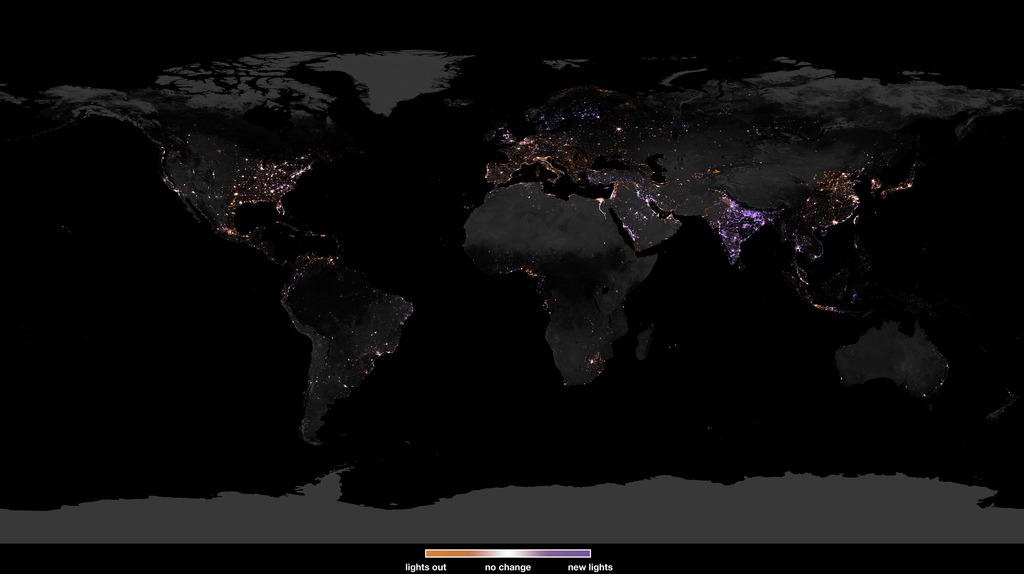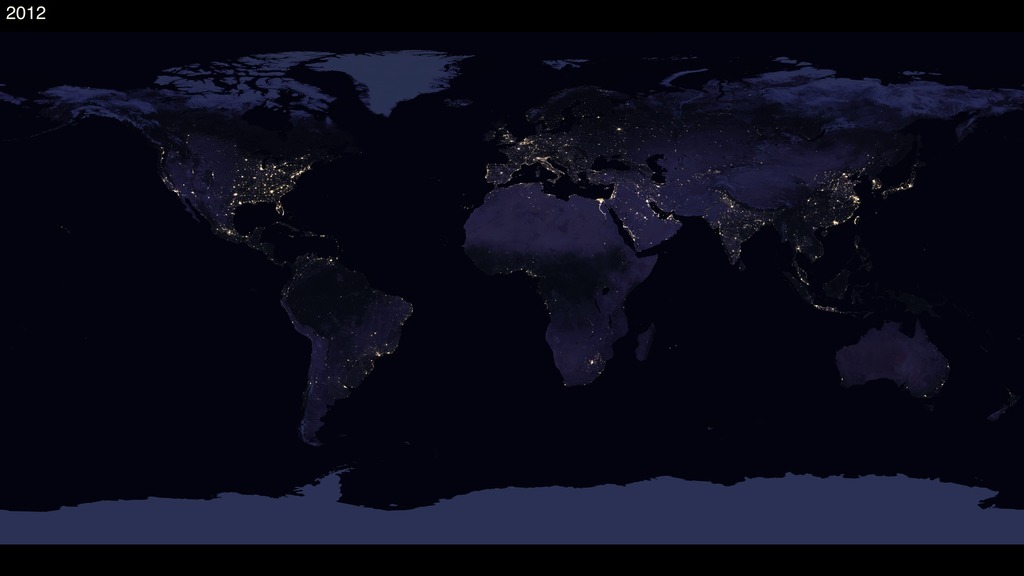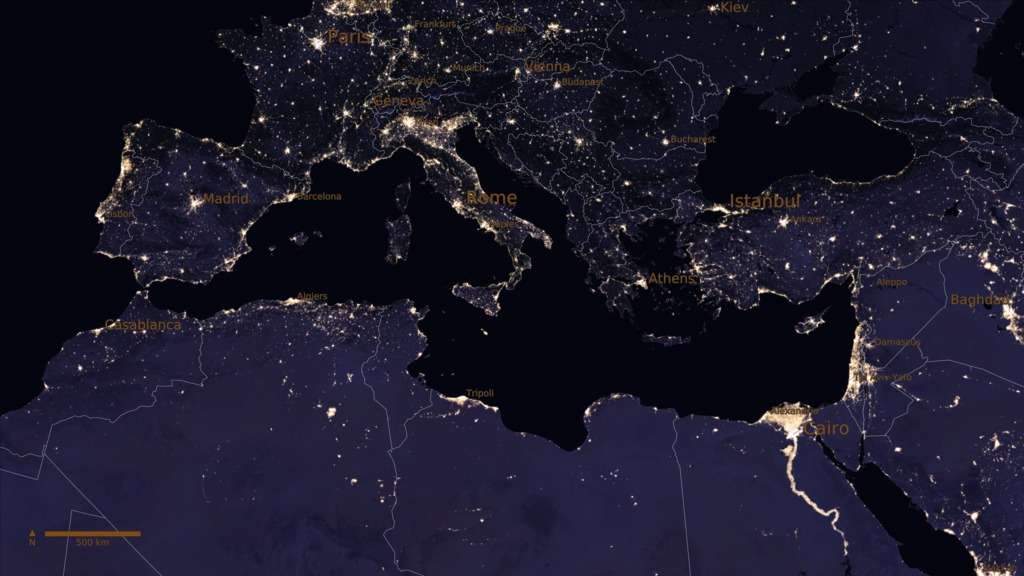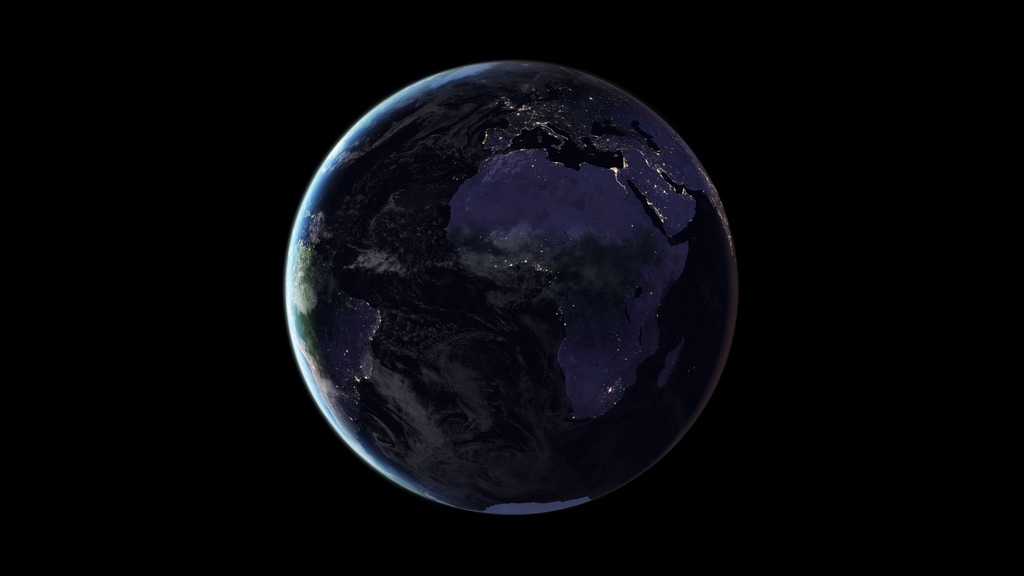Black Marble 2016

An composite image shows a cloud-free view of Earth
Satellite images of Earth at night—often referred to as "night lights"—have been a gee-whiz curiosity for the public and a tool for fundamental research for nearly 25 years. They have provided a broad, beautiful picture, showing how humans have shaped the planet and lit up the darkness. Produced every decade or so, such maps have spawned hundreds of pop-culture uses and dozens of economic, social science, and environmental research projects.
This image of Earth at night in 2016 was created with data from the Suomi National Polar-orbiting Partnership (NPP) satellite launched in October 2011 by NASA, the National Oceanic and Atmospheric Administration, and the U.S. Department of Defense. Each pixel shows roughly 0.46 miles (742 meters) across.
Scientists use the Suomi NPP night-lights dataset in many ways. Some applications include: forecasting a city’s energy use and carbon emissions; eradicating energy poverty and fostering sustainable energy development; providing immediate information when disasters strike; and monitoring the effects of conflict and population displacement. Scientists at NASA are working to automate nighttime VIIRS data processing so that data users are able to view nighttime imagery within hours of acquisition, which could lead to other potential uses by research, meteorological, and civic groups.
For More Information
Credits
Please give credit for this item to:
NASA's Goddard Space Flight Center
-
Scientist
- Miguel Román (NASA/GSFC)
-
Image processing
- Joshua Stevens (SSAI)
Release date
This page was originally published on Tuesday, April 25, 2017.
This page was last updated on Wednesday, November 15, 2023 at 12:38 AM EST.
Missions
This visualization is related to the following missions:Datasets used in this visualization
-
VIIRS [Suomi NPP: VIIRS]
ID: 722
Note: While we identify the data sets used in these visualizations, we do not store any further details, nor the data sets themselves on our site.




